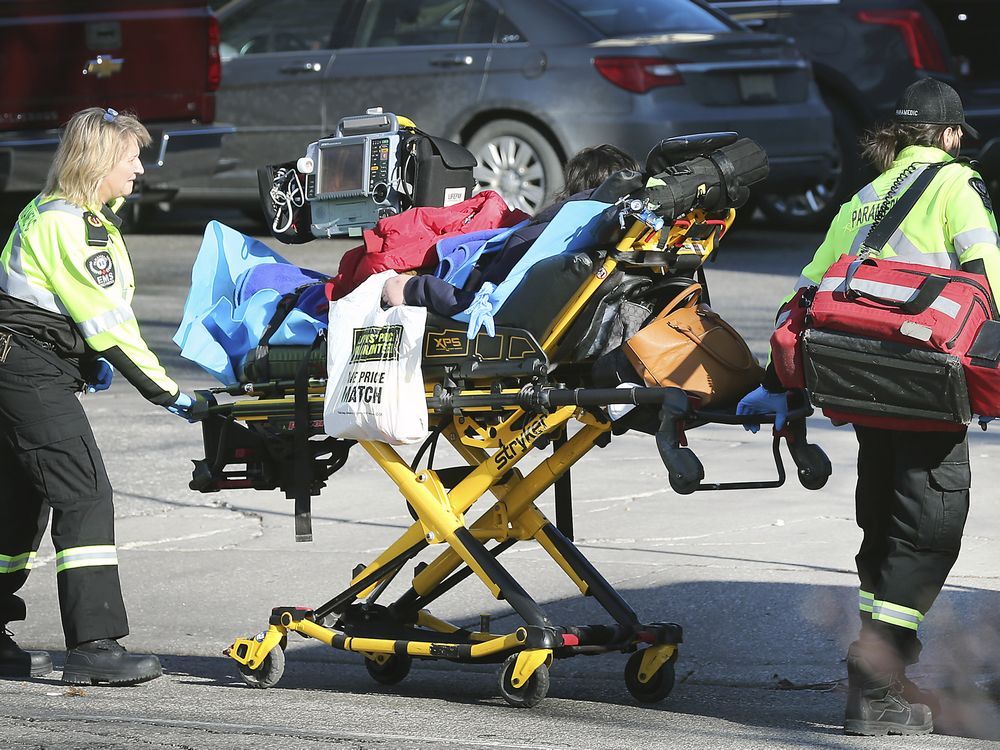Daphne Bramham: It's not enough to just keep overdose victims alive

Credit to Author: Daphne Bramham| Date: Wed, 26 Feb 2020 00:12:09 +0000
There was some good news in the 2019 data from the B.C. Coroners Service. Overdose deaths in the province declined for the first time since fentanyl-tainted drugs hit the streets and a public health emergency was declared in 2016.
The decrease was significant — down 36 per cent from 2018 — even though the death toll remains heartbreakingly high. As B.C. enters its fifth year of the crisis, nearly three British Columbians are dying every day.
It does mean that all of the money poured into this crisis — for naloxone kits, the training for paramedics, medical professionals and laypeople in how to use naloxone, more supervised consumption sites, and more people now on prescriptions for drugs like methadone and Suboxone to staunch addicts’ opioid cravings — is keeping more people alive.
But that’s really where the good news ends.
Alarmingly, the number of 911 calls has continued to climb.
Paramedics and other first responders took more than 24,000 calls last year, with calls spiking to more than 130 overdose alerts on “cheque days” or “welfare Wednesdays.”
Being revived from an overdose or living with an opioid addiction comes at a high cost.
Opioids affect the receptors in the brain, causing breathing to become dangerously slow, which in turn slows the heart and sometimes causing cardiac arrest. When the hearts doesn’t pump at capacity, less oxygenated blood makes it to the brain. Without oxygen, brain cells die — and they don’t regenerate.
It’s called toxic brain injury.
Within the coming weeks or months, the B.C. Centre for Disease Control will release data on the prevalence of brain injury among opioid users, including those who have been successfully restored to life with naloxone.
“We know that many hundreds of people will need a lifetime of care,” said Dr. Perry Kendall, who raised the alarm during the coroner’s news conference earlier this week. “It will be a tremendous burden.”
It’s far from the only one.
The burden carried by first responders is different and no less costly. They are burning out and checking out of the system, unable to cope physically, mentally or emotionally with the constant stress of being called to deal with all the overdoses.
This is not to say that harm-reduction measures aren’t working. No one disputes that they are keeping many people alive.
But until now, little attention has been focused on the quality of their lives, post-overdose.
Five years into the public health emergency, Chief Coroner Lisa Lapointe said B.C. still doesn’t have a comprehensive system that includes prevention, treatment and recovery.
The lack of a seamless system is particularly problematic and even deadly for people in rural areas and those coming out of jails and prisons, according to Dr. Nel Wieman, senior medical officer at the First Nations Health Authority.
The numbers back that up. The death rate in the Northern Health Authority, at 22.5 per 100,000, trails Vancouver Coastal, which has the highest rate, by a mere half a percentage point.
Regardless of where they live, Lapointe said families frequently tell coroners how their loved ones managed through detox only to come out and die while on the waiting list for a recovery bed.
The problem isn’t necessarily that there aren’t enough treatment beds. On most days, some lie empty because the government only funds treatment for welfare recipients. Everyone else has to pay their own way. And except for those with generous employee benefits, many can’t afford treatment that comes at a cost of $900-plus a day.
Lapointe also decried the lack of provincial treatment standards. Different operators have different approaches. Some aren’t evidence-based. Some are strictly abstinence-based and refuse to accept people on drug therapies such as methadone and Suboxone, even though without that, they are more vulnerable to overdose if they relapse.
Decriminalization is touted by some as the answer. Without fear of criminal charges, the theory is that people would be more willing to seek help.
They point to Portugal, where decriminalization was brought in as part of a massive overhaul of its drug treatment system.
But decriminalization has only worked there because Portugal also boosted spending on the other three pillars — prevention, enforcement and treatment.
Here, the crucial elements are missing. With a minority government in Ottawa, the Liberals already have enough problems on their plate to risk raising the controversial idea of decriminalization.
Meanwhile, most provinces, including B.C., haven’t invested enough in the infrastructure to put a Portugal-style model in place.
This week, Mental Health and Addictions Minister Judy Darcy agreed that there are enormous gaps in B.C.’s fragmented system.
When the New Democrats were elected less than three years ago, she said the drug treatment system had been neglected for so long that it was not able to cope with regular tasks, let alone a public health emergency.
The government is taking steps to fix that. But whether it’s moving fast enough is a conversation that both the coroner and chief medical health officer are pushing British Columbians to have because the lives of many loved ones depend on it.
Twitter: @bramham_daphne